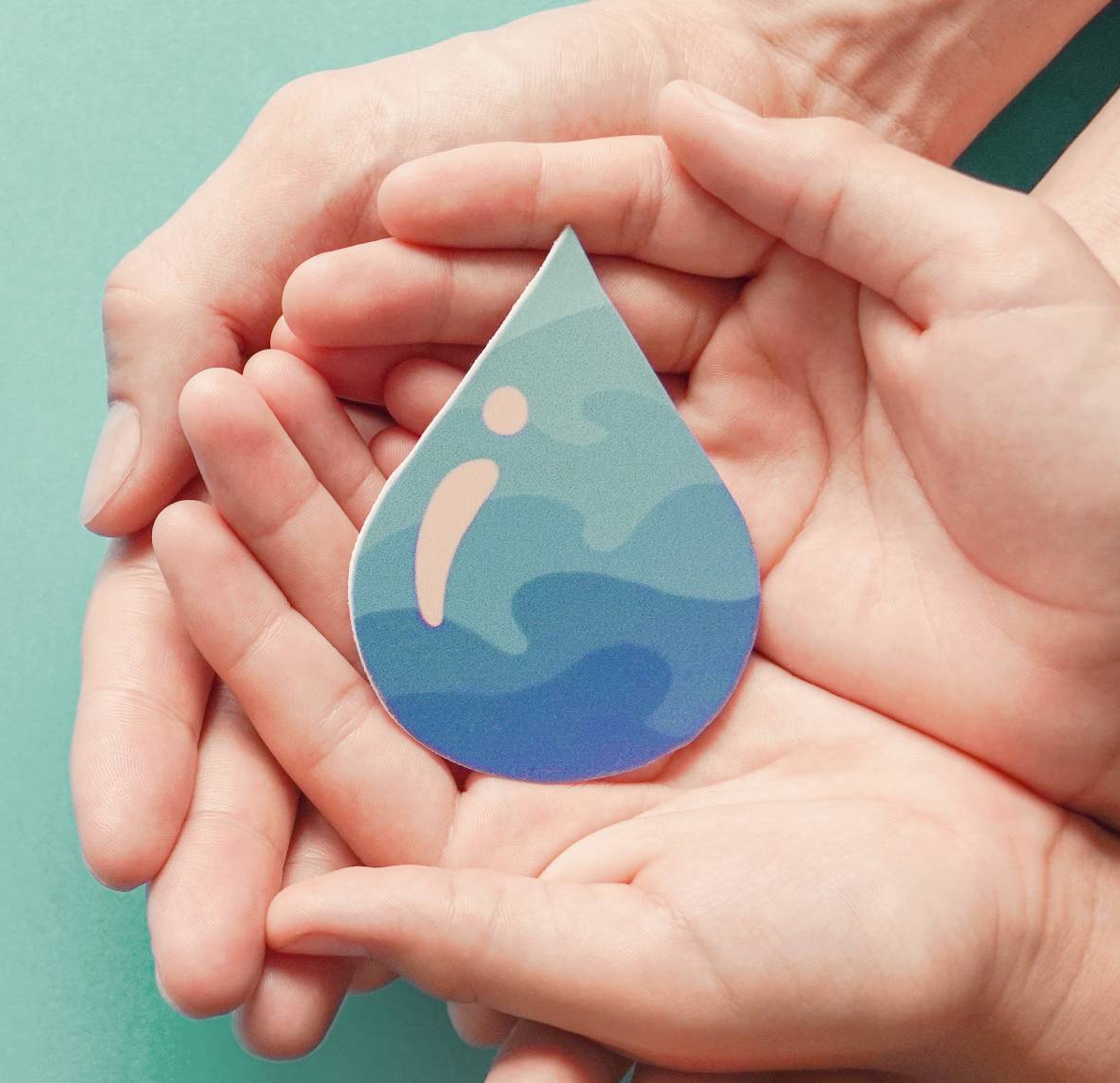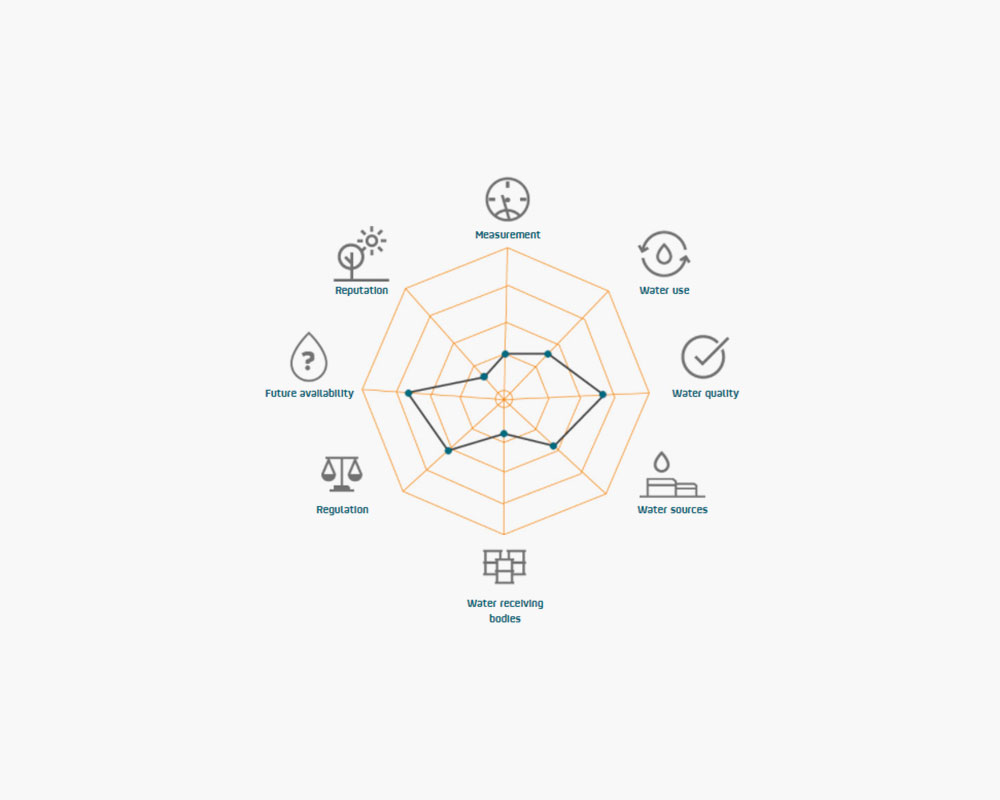Types of water footprint
Types of water footprint
If we look further into it, there are three types of water footprint that we are aware of depending on where the water comes from:

Green footprint (rain)
Green footprint (rain)
This is the water that is superficially stored in the soil or on plants such as water from rain or snow. A green water footprint calculates the volume of water used in agricultural, horticultural, and forestry products.

Blue water footprint (fresh water)
Blue water footprint (fresh water)
This is the water stored in large masses, from surface or groundwater sources, such as rivers, lakes, and aquifers. A blue water footprint calculates the volume of water consumed resulting from irrigated agriculture, industry, and domestic use.

Gray water footprint (water quality)
Gray water footprint (water quality)
This last type refers to the volume of fresh water required to dilute the load of pollutants from production processes until a concentration below the maximum allowed by the regulations in force is achieved.





